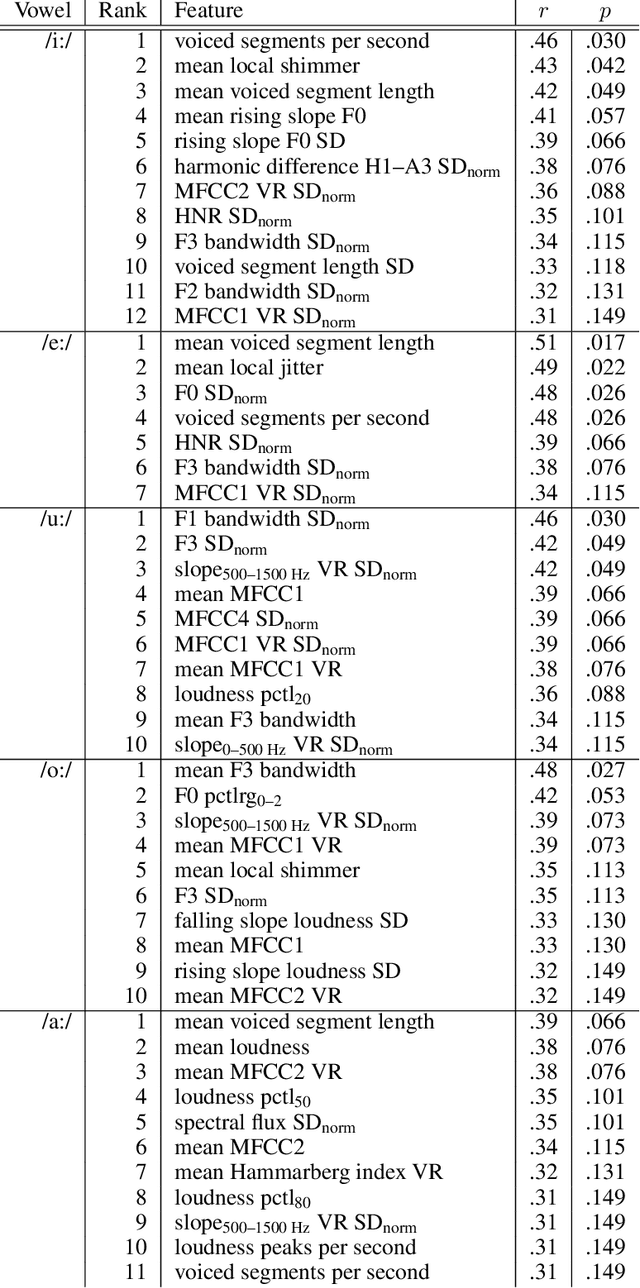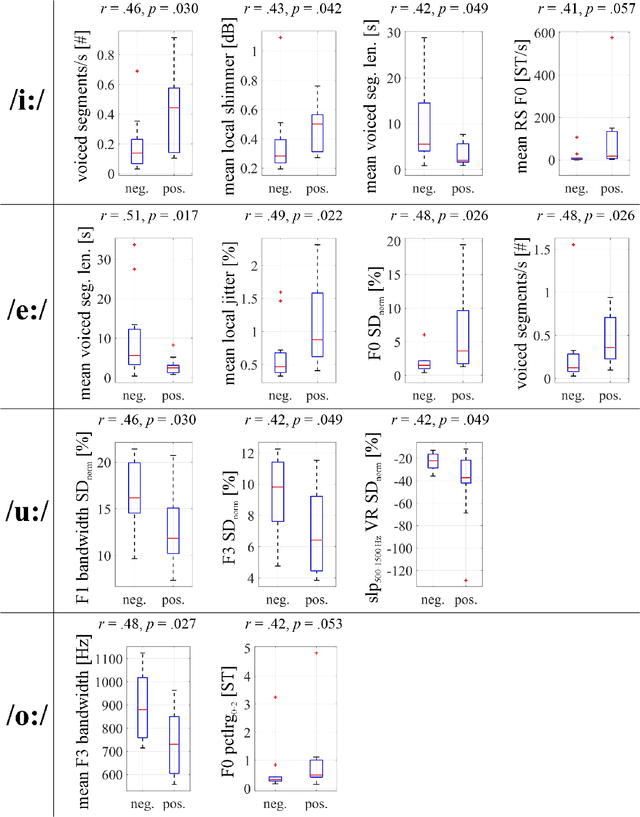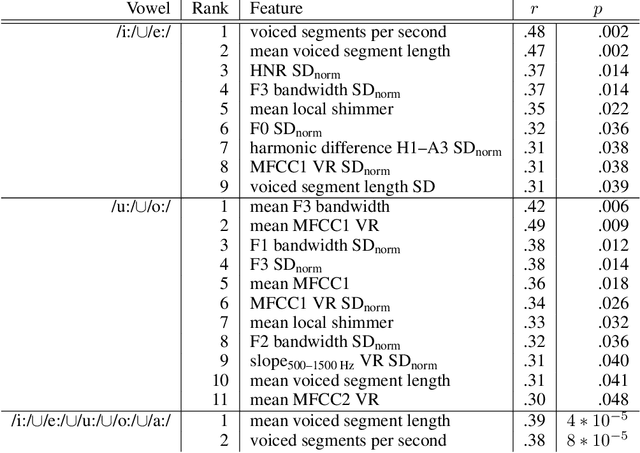Elena Kramer
The voice of COVID-19: Acoustic correlates of infection
Dec 17, 2020


Abstract:COVID-19 is a global health crisis that has been affecting many aspects of our daily lives throughout the past year. The symptomatology of COVID-19 is heterogeneous with a severity continuum. A considerable proportion of symptoms are related to pathological changes in the vocal system, leading to the assumption that COVID-19 may also affect voice production. For the very first time, the present study aims to investigate voice acoustic correlates of an infection with COVID-19 on the basis of a comprehensive acoustic parameter set. We compare 88 acoustic features extracted from recordings of the vowels /i:/, /e:/, /o:/, /u:/, and /a:/ produced by 11 symptomatic COVID-19 positive and 11 COVID-19 negative German-speaking participants. We employ the Mann-Whitney U test and calculate effect sizes to identify features with the most prominent group differences. The mean voiced segment length and the number of voiced segments per second yield the most important differences across all vowels indicating discontinuities in the pulmonic airstream during phonation in COVID-19 positive participants. Group differences in the front vowels /i:/ and /e:/ are additionally reflected in the variation of the fundamental frequency and the harmonics-to-noise ratio, group differences in back vowels /o:/ and /u:/ in statistics of the Mel-frequency cepstral coefficients and the spectral slope. Findings of this study can be considered an important proof-of-concept contribution for a potential future voice-based identification of individuals infected with COVID-19.
 Add to Chrome
Add to Chrome Add to Firefox
Add to Firefox Add to Edge
Add to Edge